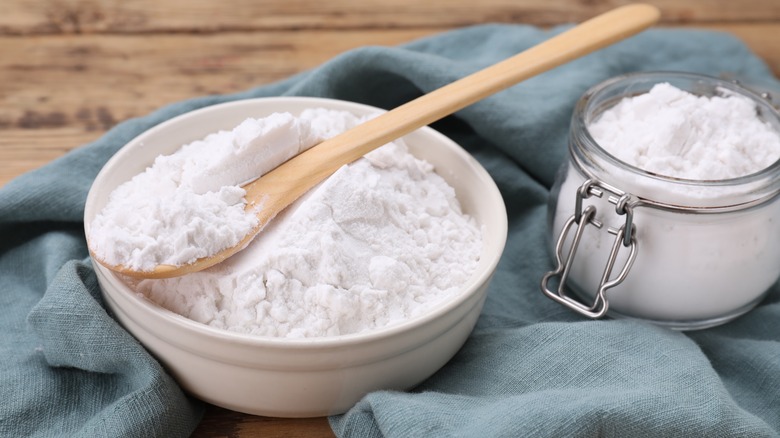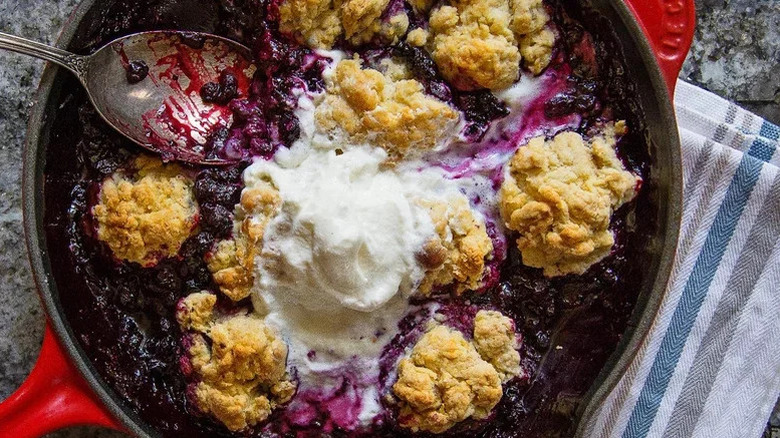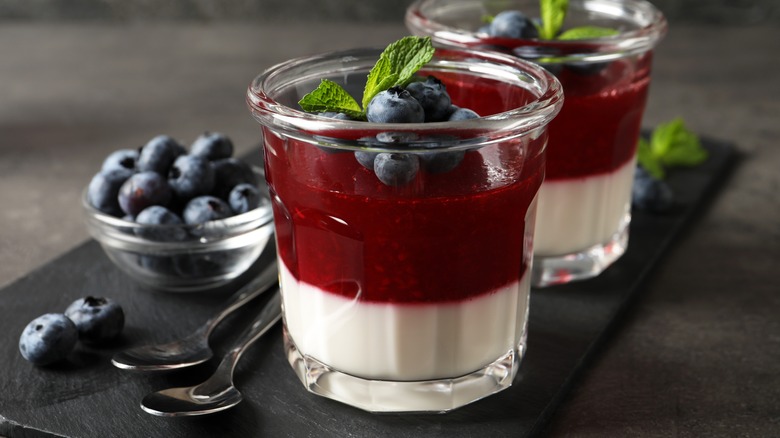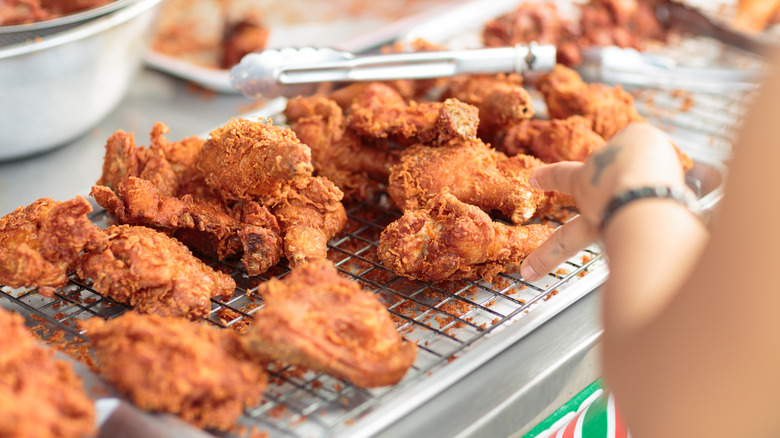The Best Substitute For Cornstarch Depends On How You're Using It
We may receive a commission on purchases made from links.
It's true, cornstarch is a superstar in the kitchen. Its ability to change the texture of foods makes it a must-have for many sauces, soups, desserts, and fried dishes. The reason is simple: chemistry. When cornstarch is heated with water, starch molecules swell and release amylopectin, the same molecule that makes white rice gelatinous and sticky. Both the swelling (filling with water) of the starch and the release of pectin work to turn liquid into a thicker, more gelatinous version of itself. The process is called gelatinization, but it's really just magic.
Any watery sauce, whether savory or sweet, can benefit from a little cornstarch, and it's a must for frying anything to a perfect crisp. If cornstarch was a musical, its main number would go like this: It thickens! It shines! It stabilizes! It crisps! Once you start using cornstarch in all of its useful ways, you and your jazz hands will never look back.
But there will be times — sad, dramatic times — when your simmering sauce is too thin or too dull or your eggplant fries are soggy and limp. As you reach for your trusty cornstarch container to remedy these culinary ails, it's empty. Perhaps you gasp. Not to worry; the show will go on. Cornstarch has more than a few well-deserved understudies waiting in the pantry. Ingredients like gelatin, pectin, and baking powder are ready and willing to make your salted caramel sauce shine, your classic Kung Pao tofu crispy, and your savory cranberry sauce sparkle.
Look inward to thicken fruit fillings and sauces
No cornstarch, no problem when it comes to thickening your favorite fruity fillings, jams, or sauces. There are fine alternatives that can be found within the recipe you're already using, according to Chef Leanne Tran, who leads a six-person, all-female pastry chef team at Le Crocodile and Bar Blondeau at the Wythe Hotel in New York.
"It all depends on what you are making and what you are trying to achieve," says Tran. "I like to use a thickening agent already found in one of the ingredients of the recipe. For example, in pies or fruit and pastry applications, I like to use a sprinkling of flour mixed in with the sugar. This will help soak up any of the excess juices without making the end product too sticky or goopy. In jams, I'll use pectin as it's naturally occurring in fruit and will produce a more naturally thick consistency."
The consistency of your fruity fillings found in desserts like a cobbler will make or break it. Too thin, and it's like fruit soup. Too thick, and it's gluey. Try any one of these 11 crave-worthy cobbler recipes, and you'll know the perfect texture of cobbler when you taste it. And while cornstarch is great way to nail it every time, flour mixed with sugar works just as well.
For sweet sauce slip-ups, try gelatin, butter, or xanthan gum
In the large, yummy universe of sauces, there is a sweet spot reserved for fruit, sugar, and dairy. Coulis, the versatile, sweet sauce you should know how to make, gets its smooth consistency from simmering, pureeing, and straining fruit — an easy and beautiful technique that everyone can (and should) master. You can even make a savory version of coulis with peppers. When any of these sauces (even chunky ones like chutney) don't cook down enough, they may turn out too thin. Don't stress: There are plenty of versatile food products besides cornstarch to save it.
"If making a fruit sauce, I like to use a sheet or two of silver strength gelatin or pectin," Tran says. Gelatin sheets (such as those from PerfectaGel) are a genius move, especially if you're making large batches. But remember that geletin comes in different bloom strengths, or firmness. Other dessert sauces use butter and xanthan gum to tighten up sauces and make them shimmer.
Tran explains, "If making a caramel sauce, emulsifying in butter will help thicken and make glossy. Otherwise, a tiny bit of xanthan gum blended in will do the trick." She points out that xanthan gum can be the perfect stabilizer — if you remember one thing. "Xanthan gum is a great stabilizer for sauces because you are able to use less with great effect," Tran says. "Too much, though, [and] you'll get a sticky and stretchy consistency that is not desirable."
Baking soda and baking powder are also queens of the crisp
It's no secret that cornstarch makes for some of the crispiest chicken on the planet. It's a key ingredient to this perfect, crowd-pleasing crispy Korean fried chicken recipe, but there are many paths in the kitchen, young fryer. If you're out of cornstarch, there's a stellar alternative.
"Baking powder is great for batters because it acts like salt," Tran says. "It draws moisture and air to the surface and evaporates as it cooks. Tiny air bubbles burst while the surface cooks and creates crispy edges." While baking powder and cornstarch are chemically different, the leavening qualities of baking powder will also give it a tempura-like quality, another extra-delicious way to enjoy fried chicken. You can also use baking soda — an old-school Southern way of crisping up chicken with all-purpose flour — or use them both.
The ratio is easy, and you can double it for a fried-chicken party (because that sounds amazing). If you're opting for baking powder or baking soda only, use 1½ teaspoons of either for every 1¼ cups of all-purpose flour. To combine them, use 1 teaspoon of baking powder and ½ teaspoon of baking soda. Take this path when coming up with your own blend of herbs and spices for frying chicken too. A custom-blend of herbs and spices, along with your own interpretation of the perfect crunch, may earn you the nickname of Colonel Sanders 2.0 before you know it.



